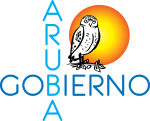Aruba celebrates World Migratory Bird Day 2025, focusing on "Shared Spaces: Creating Bird-Friendly Cities and Communities.”
ORANJESTAD—Aruba will participate in the global celebration of World Migratory Bird Day (WMBD) on Saturday, May 10, 2025, with a special focus on this year’s theme: Shared Space: Creating Bird-Friendly Cities and Communities.
This campaign aims to raise awareness of the importance of integrating the needs of migratory birds into our urban and municipal planning and development. The Department of Nature and Environment (DNM) highlights the migratory birds' issue twice a year, given that Aruba lies along these birds' migration route.
This year's campaign will highlight the need for a healthy coexistence between humans and birds. With the increase in human population and the expansion of urban areas, it is becoming increasingly important for cities and communities to consider the well-being of the birds that visit us temporarily or live here. This includes preserving green areas, reducing pollution, and minimizing the impact of construction on their natural habitat.
Aruba is a key point on the migratory path of several bird species. Some of the birds used in the 2025 WMBD campaign's design for birds' visits to Aruba include:
- Peregrine Falcon (Falco peregrinus), a powerful bird of prey that passes us by on its long journey.
- American Redstart (Setophaga ruticilla): a small, brightly colored bird that searches for shelter and food.
- Red Knot (Calidris canutus): a medium-sized red bird that can fly thousands of kilometers.
The presence of these birds highlights the interconnectedness of ecosystems and underscores our responsibility to protect them during their time here.
To create bird-friendly cities and communities in Aruba, we must take concrete actions and embrace best practices. Here are some suggestions:
- Create more green areas, parks, gardens, and other natural spaces in urban areas that provide habitats and food sources for birds.
- Use bird/animal-friendly lighting design. Artificial lighting can disorient migratory birds. A good lighting plan minimizes this negative effect. For more information, consult the SOP for environmentally friendly lighting.
- Encourage the planting of native trees: native trees offer the most effective food sources and habitats for local and migratory bird species.
- Limit the use of pesticides and herbicides: chemicals can harm birds and their food source.
- Raise community awareness: It is crucial to educate the public about the importance of migratory birds and how we can help them. Share the articles we publish on social networks for this day with the hashtags #sharedspaces #WMBD2025 #worldmigratorybirdday.
- Implement building codes: ensure that new developments consider crucial areas for birds. Avoid large windows in architectural design, as they confuse birds. Birds fly to them, crash into them, and die.
- Keep your pet (cat) indoors: birds are real prey for them.
DNM will be publishing many educational materials in the context of the celebration of World Migratory Bird Day 2025. DNM thanks organizations such as Aruba Birdlife Conservation for their continued attention to our local and migratory birds. We invite the community, companies, schools, and organizations to actively participate and contribute to a friendlier environment for our migratory birds. Together, we can make Aruba a great place to live for the people and the diversity of birds that visit our island. We all play a role in supporting migratory birds! Happy World Migratory Bird Day!
